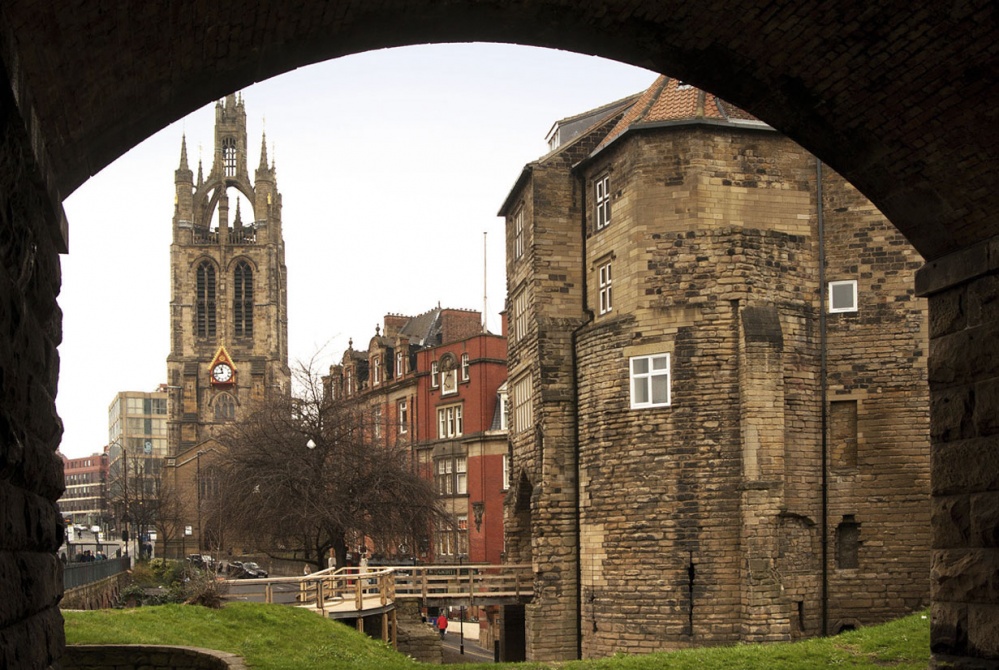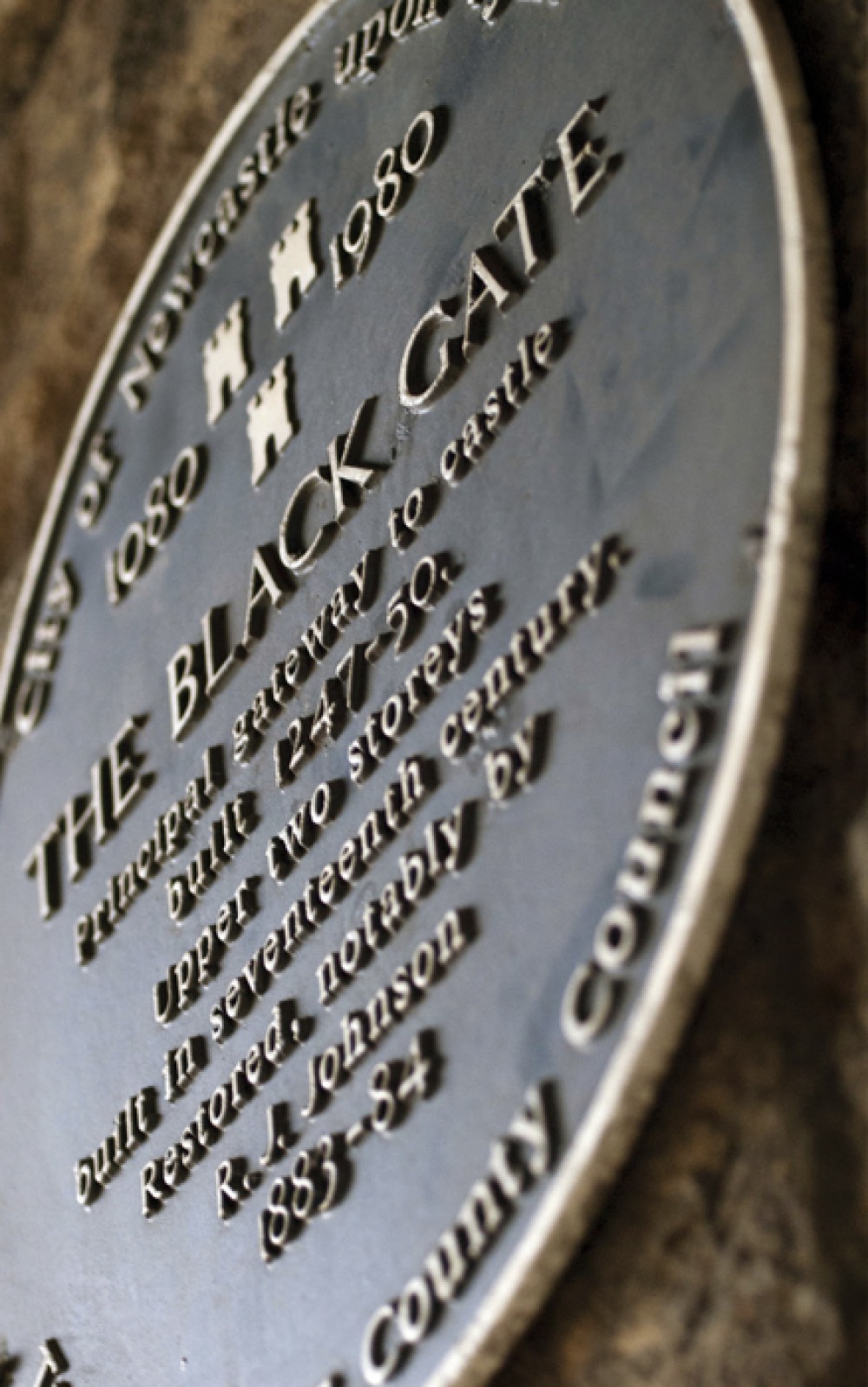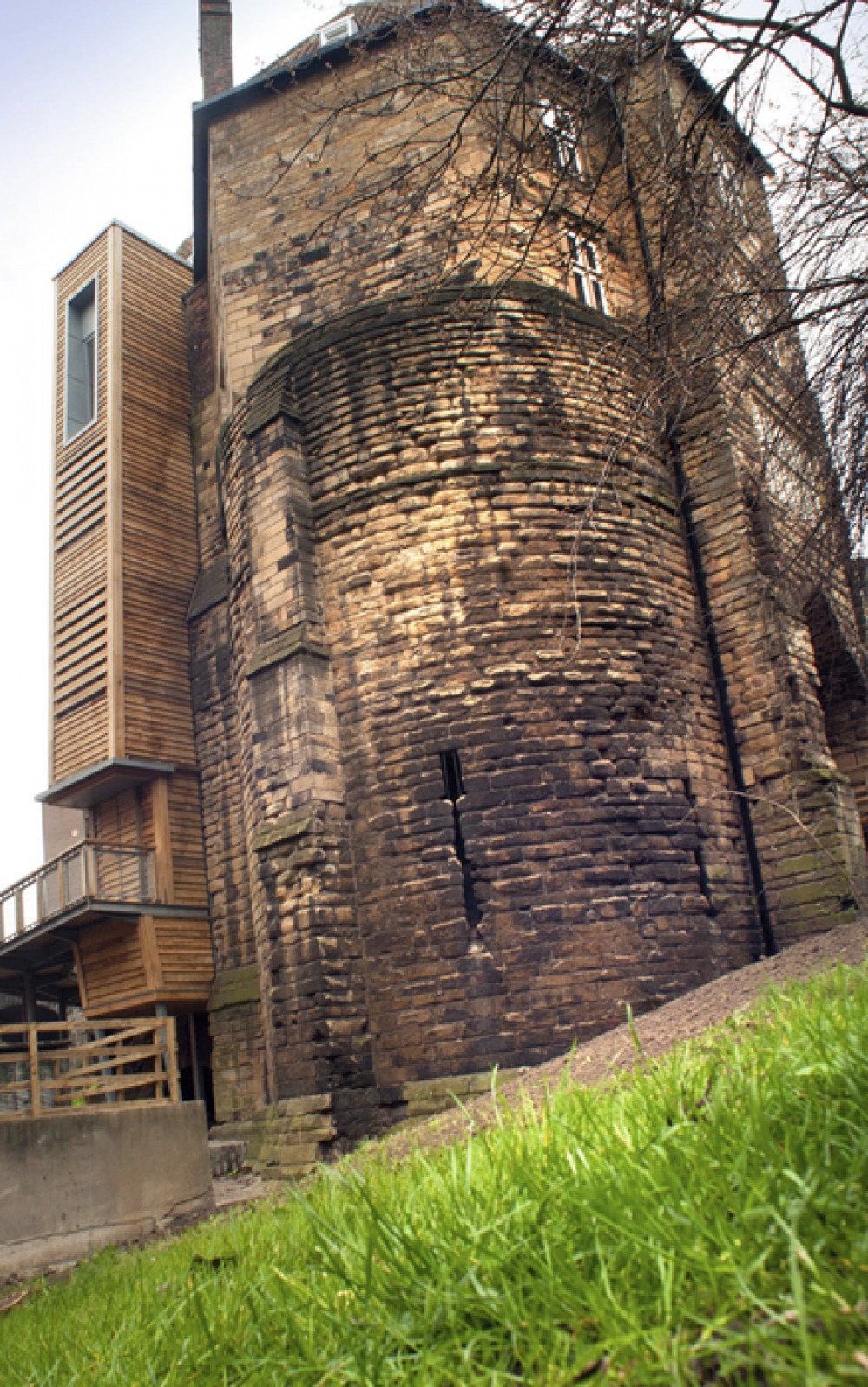Gate Expectations

As a £1.67 million heritage project to renew interest in Old Newcastle nears completion, Roz Tuplin meets Project Manager Kate Sussams to talk sieges, slums and celebrity graffiti
Thankfully, this is not the case today. I'm here to meet Kate Sussams, Project Manager for the Old Newcastle Project, a major heritage project which aims to redefine the surrounding area, including the Black Gate, Castle Keep and St Nicholas Cathedral, as one unified cultural destination. The area seems to have great potential – having arrived a little early, I notice two separate tourist groups already milling around. An English couple peer at the plaque within the gate’s arch, and four Spanish tourists look around eagerly, as if they're not sure what they're looking for.
If they were to come back in a few months, they’d be much less confused – this summer Kate and her team will be unveiling a brand new museum in the Black Gate, rebranded along with the Castle Keep as Newcastle Castle. Kate is an experienced archeology curator who previously worked at Sutton Hoo in Suffolk, and at Jarrow’s Bede’s World. As we climb a narrow flight of steps to enter the building she explains the thinking behind the project. ‘It’s been recognised that the area between the Quayside development and Northumberland Street is very busy, and the Monument area is really funky, but old Newcastle is actually under-represented, even though this is where the story of the city starts.’
We arrive in the first floor room that will soon be the reception area, which is more spacious inside than you'd expect. There’s nothing much in it yet, but with a sudden, well-timed burst of sunlight pouring through the windows, you can picture its potential. Kate explains that the building we’re in would have been vital to protecting the medieval city from invasion. ‘With the Border Wars and different English kings trying to maintain power against the Scots, it was a really key defence,’ explains Kate.
Cast all images of bustling medieval courtyards from your mind though, because the most interesting phase of the Gate's story is yet to come. In the 17th century, an enterprising property developer, Alexander Stephenson, started building homes here. ‘It became a town within a town,’ Kate says. ‘But it was still a royal stronghold so all the regulation on merchant activity in the town didn’t apply here. It was a bit earthy.' She smiles. 'I call it the Bigg Market before the Bigg Market.'
The atmosphere of merriment would have been somewhat broken midway through the century when Civil War broke out. In the run up to the war, it’s likely that the several taverns in the area would have been alive with discussion of the issues of crown and state, and when the Scots descended on the city 370 years ago in the eight-month Siege of Newcastle, the Black Gate was the last royalist defence before the city was stormed in October 1644. For two days, the last royalists huddled in the castle keep as Parliamentarian forces swept in from the west.

By the mid-19th century the area was developing a reputation for wine and wenches, and looking down onto the courtyard from the first floor balcony you can imagine the bustle of tradesmen flogging their wares and the stench of beer. ‘By the 1840s you have Irish refugees in the town, fleeing the potato famine, and they tended to settle at the castle,' says Kate. 'So you have hardened Geordie drinkers with hardened Irish drinkers.’
This represents a bit of a contrast with our usual mental image of Georgian Newcastle – the lofty elegance of Grainger Town, the refinement of the Literary and Philosophical society. By 1856, there was a proposal to demolish the ‘great nuisance’ building, which was by then essentially a slum, until the Society of Antiquaries saved it, leasing it in 1883 and converting it into a museum, which was open until the late 1950s. The society now operates at the other end of town, at the Great North Museum: Hancock, but Old Newcastle Project will be borrowing artefacts from their collections for the new exhibitions. ‘It’s a real irony that actually what we’re now doing is going back to the Antiquaries 130 years later and saying, "Can we borrow some stuff?"'
At this point I suddenly notice something isn’t quite right with the room – the wooden beams between the floor and the ceiling aren't as shiny and new as the rest of the fittings, but are covered in tiny scratches. On closer inspection, I realise that they’re covered with graffiti – names scratched into the wood, mostly dated between the 1920s to the 1940s. Kate points to one in particular, which claims to be written by a George Formby. Surely not the George Formby? The very same, says Kate. ‘He was in Dick Whittington at the Empire Theatre in 1938. George Formby loved Newcastle.’ Kate tells me that they are considering gathering all the names on the beams together and finding out what happened to them all. They might struggle with Pinocchio. ‘There’s a Marilyn Monroe somewhere too,’ Kate laughs. This historical treasure isn’t even one of the exhibits, which bodes well.
We head up to the next floor, which is going to be a learning centre for school groups, and can be hired out for drinks receptions. Next we head up to the third floor, which was once the Society of Antiquaries’ library, and will soon be the exhibition space. ‘We’re working with Studio SP from Edinburgh; they did the Lindisfarne Gospels and Vindolanda Museum. They have loads of brilliant ideas about how to creatively display what we’ve got. It’s not gold and silver, but it’s real people’s things that will tell the stories.’
Getting a museum opened and ready is one thing, but keeping people interested is the biggest worry for Kate. ‘We want people to feel they’ve spent their money wisely. Because no one’s getting any money right now,’ she adds, plainly. But the team are looking to the long term too. ‘We’ve got to make sure there are reasons for visitors to come back again. It’s not just an exhibition where you come and think, "Okay, I’ve done that." We have volunteers giving talks and tours; we have a handling collection. We’ve got to make a business that stands on its own two feet.’ Accessibility is key, and anyone who has passed through the area recently will have noticed the new lift shaft that now clings to the side of the building. 'We want to ensure that everyone can access these stories.'
Old Newcastle Project are also planning theatrical events and a medieval fair, and they're considering bringing in some Civil War reenactment groups to bellow and wave flintlocks around. The aim is to welcome the first groups through the doors over the summer, with no single schmoozy private champagne reception but a series of events over four or five months. At this point, Ché Hope, a young marketing graduate and volunteer who has been accompanying us on our tour of the building chips in. ‘We've been discussing having an extended launch period, so we have events that are inclusive for all kinds of people. There’ll be a chance for everyone to get in and see it,’ he says.
Kate is keen to stress the hard work that volunteers like Ché have put into the project. She seems surprised by the support she's received. Despite having all hands on deck, it's a stressful time for Kate, and she confesses that she’s still in the process of writing the text for the exhibition. They're due to open in July. ‘I did dream about it last night. I had an awful anxiety dream that it wasn’t going to get finished.’ I ask her if the museum has become her baby. ‘Yes, but it’s going to grow. It’ll be a teenager. Then it won’t need me anymore.'
There are plenty of other stories about the area that Kate has under her belt, from the time Harry Houdini was tied up and dumped into the Tyne (voluntarily, that is) to a bizarre story about a donkey being pushed off the castle roof. From wealthy merchants and tavern owners to bawdy theatrical groups and scruffy shopkeepers, the area is rich in recognisable characters and history. We step out onto the wooden walkway which curves around the side of the building, and look down onto the medieval street below, snaking its way towards the Quayside. The sun is out, and it’s turning into a beautiful day. ‘I can’t wait for summer,' says Kate.

Oldies But Goodies – some more highlights of the Old Newcastle area
St Nicholas Cathedral
England's most northern cathedral has the only pre-reformation lectern in the region among its numerous treasures, and it once employed influential 18th century composer Charles Avison as its organist.
Bessie Surtees House
A beautifully preserved example of Jacobean architecture, it was from these merchants' homes that Bessie Surtees eloped with John Scott, Baron Eldon.
Ancient streets
Two medieval streets survive in the area, The Close and The Side (the latter was the birthplace of Admiral Lord Collingwood). The nearby Dog Leap Stairs were the route through which Bessie Surtees and John Scott supposedly eloped on horseback, though that seems improbable when you see how steep they are.
The Castle Keep
Every major historical event to touch the city has played a role in the Keep's history. It was built on the site of the Roman settlement Pons Aelius and served as an air raid shelter in World War II.
The Vampire Rabbit
Little is known about the cartoonish fanged rabbit which leers from above the ornate doorway in Amen Corner, just behind the cathedral. Dating from 1901, one theory says that it is in fact a hare, in reference to Sir George Hare Phipson, founder of the Masonic Hall in Durham, who was a friend of the building's architect William H Wood.



